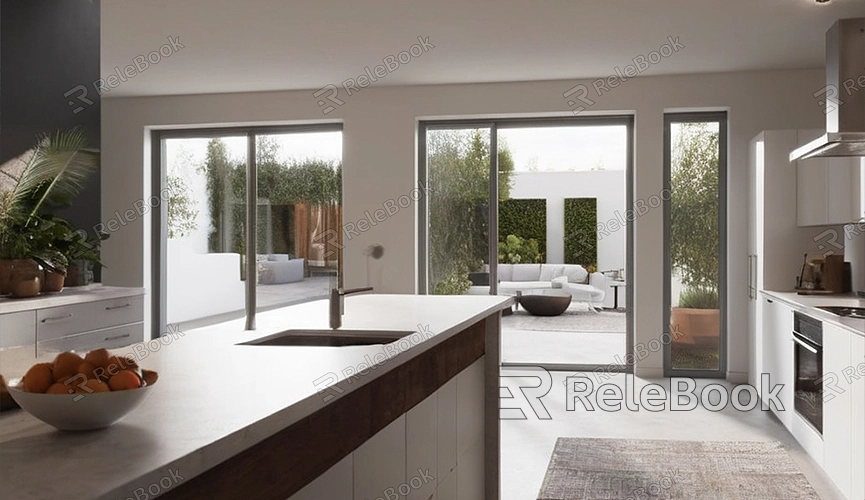How to Render Frames in Blender
Blender is a powerful open-source 3D modeling and rendering software widely used in animation, visual effects, game design, and more. Rendering frames in Blender is a crucial step in creating animations and generating static images. This article will introduce how to render frames in Blender and provide some practical tips to help you improve rendering efficiency and image quality.
Preparation
Before starting the rendering process, some preparations need to be made:
1. Install Blender: Ensure you have installed the latest version of Blender, which can be downloaded for free from the Blender website.
2. Create or Import 3D Models: Start a new project in Blender and import or create your 3D models.
3. Set up the Scene: Adjust lighting, camera angles, and materials in the scene to achieve the desired effects.

Rendering Setup
Before rendering, some basic rendering settings need to be configured:
1. Choose Rendering Engine: In the right-side properties panel of Blender, click on the "Render" tab and select the rendering engine. Blender offers two main rendering engines: Eevee and Cycles. Eevee is suitable for real-time preview and quick rendering, while Cycles provides high-quality ray-tracing rendering.
2. Set Rendering Resolution: In the "Output Properties" tab, set the rendering resolution. By default, Blender uses a resolution of 1920x1080, which can be adjusted as needed.
3. Select Output Format: In the "Output Properties" tab, choose the rendering output format. For single-frame rendering, PNG or JPEG format can be selected. For animation rendering, AVI or FFmpeg format can be chosen.
Single-Frame Rendering
Single-frame rendering is used to generate static images. Here are the specific steps:
1. Set Camera View: In the 3D viewport, press Numpad 0 to switch to the camera view. Adjust the camera's position and angle to capture the desired scene.
2. Render Single Frame: Press the F12 key or choose "Render" -> "Render Image" from the top menu. Blender will start rendering the current frame and display the result in the rendering window.
3. Save Rendered Image: In the rendering window, press the F3 key or select "Image" -> "Save" to choose a save path and file format and save the rendered image locally.
Animation Rendering
If you need to render an animation, multiple frames need to be rendered. Here are the specific steps:
1. Set Frame Range: In the "Output Properties" tab, set the start and end frames. For example, if you need to render an animation from frame 1 to 250, set the start frame to 1 and the end frame to 250.
2. Set Frame Rate: In the "Output Properties" tab, set the frame rate (FPS) of the animation. Common frame rates include 24, 30, and 60 FPS.
3. Choose Output Folder: In the "Output Properties" tab, set the output folder path, ensuring sufficient storage space to save the rendered frames.
4. Render Animation: Press Ctrl+F12 or choose "Render" -> "Render Animation" from the top menu. Blender will start rendering each frame sequentially and save the rendered results to the specified output folder.
Optimizing Rendering Performance
Rendering may consume a significant amount of time and resources. Here are some tips to optimize rendering performance:
1. Reduce Sampling Rate: In the "Render" tab, lowering the sampling rate of the Cycles rendering engine can significantly speed up rendering. Lowering the sampling rate appropriately and denoising the image after rendering can improve rendering efficiency without significantly affecting image quality.
2. Use Image Denoising: Enabling Blender's built-in denoising feature can reduce rendering noise and improve image quality. Check the "Denoising" option in the "Render" tab.
3. Distributed Rendering: If you have multiple computers, you can use Blender's distributed rendering feature to distribute rendering tasks to different computers, significantly improving rendering speed.
Rendering frames in Blender is a key step in generating high-quality static images and animations. By selecting the appropriate rendering engine, setting rendering parameters, and optimizing rendering performance, you can significantly improve rendering efficiency and image quality. We hope the steps and techniques provided in this article will help you smoothly complete rendering tasks in Blender and create more impressive works. If you need many high-quality 3D textures and HDRI or 3D model downloads while creating models and virtual scenes, you can download them from Relebook.

